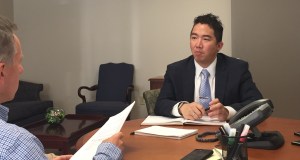When the digital communications manager for the Government Accountability Office came to the position in 2010, she was thrust into figuring out how the agency could best use analytics tools. Now, less than four years later, she’s written a guide for how government agencies can use Google Analytics to figure out the best way to make information easily accessible to the public.
Sarah Kaczmarek released the first edition of “Google Analytics for Government” about two years ago. Just yesterday, Kaczmarek posted the second edition online, which has “gone through a fairly extensive rewrite,” according to her introduction.
“When I got started using analytics, there was really nothing like this,” Kaczmarek said in a phone interview. “I was trying to figure out not only how to use everything in it, but how do you make it applicable to a federal government agency.”
Government agencies’ use of analytics, Kaczmarek said, is different than how the private sector might use them. Rather than attempting to draw visitors to a site for advertising or marketing purposes, government agencies are trying to make information, such as reports and information, easily accessible to the public.
So, while Kaczmarek muddled through the process of finding out what was working best for her at GAO, she “put it all down on paper,” and after talking with others at the federal level, she decided to share it.
Throughout the 65-page manual are screenshots of how to navigate the menus of the Google Analytics platform, as well as government-specific tips and tricks to maximize the effectiveness of its use.
“I tried to work in more insights on how to use the data in each of the sections,” Kaczmarek said. “I tried to incorporate more of the lessons learned or the takeaways of how you can use the data [at the government level].”
The manual covers everything from how to get started with Google Analytics to the more in-depth tools that one can use to analyze Web data. It also features a four-page glossary at the end of the report.
Since the first edition’s release, Kaczmarek has received input from other federal agencies, state agencies and international entities that have used her manual, either for training purposes or as a reference guide.
In Eugene, Ore., Max Keele, a Web analyst for the city, said he points content editors to Kaczmarek’s work as an introduction to Google Analytics.
“When a content editor wants to dig deeper into the data, or just wants a better understanding of the reports, I can point them to Sarah’s most excellent primer, ‘Google Analytics for Government,’” Keele said in an email statement. “In over 10 years of professional GA use, I’ve not seen a better introduction.”
Noel “Shad” Keene, a meteorologist for the National Oceanic and Atmospheric Administration, said he uses Google Analytics to make National Weather Service websites more effective.
“If we know where our customers are viewing information, we can meet them there with life- and property-saving weather hazard information,” Keene said in an email statement. “Sarah’s got a knack for organizing complex information in a simple, visual and functional way, allowing readers like me to get the most from her experience in a short time.”
Kaczmarek’s manual has prompted her to deliver a series of webinars and presentations through her work at GAO. She has also been using her experience with writing the manual and teaching Google Analytics as an adjunct professor at Georgetown University since December.






